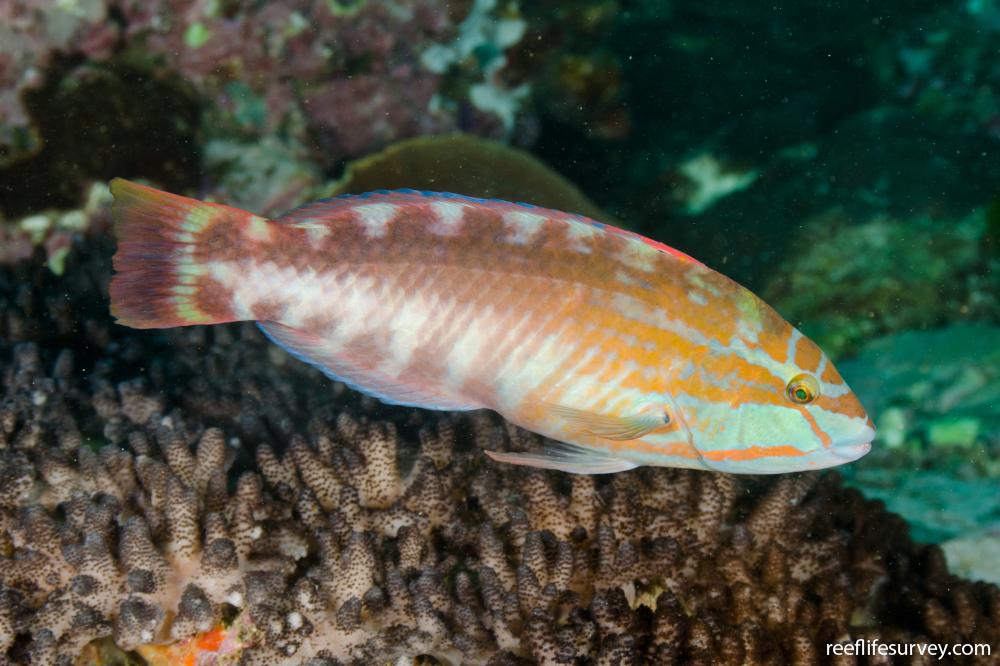Pseudolabrus guentheri
Gunthers wrasse | Gunther’s Rainbow-fish | Pseudolabrus guntheriSimilar Species
Same Genus
Distribution
Temperate Australasia, Tropical Indo-Pacific
Description
Males with red-brown bars on body merged across mid body by a broad matching colour stripe, white scale edges creating fine oblique bars on lower body, green with red stripes radiating from eye. Juveniles and females variable in colour, but with spot at front of dorsal fin, stripes from face to front of body, light scale edges creating fine oblique lines on lower body and usually small black spots on upper rear body. Small juveniles with white stripe from above eye to tail base. Endemic to eastern Australia.
Information
Max Size: 18 cm
Sea Temperature Range: 15.4-28.4°C
Depth: 1-20m
Habitat Generalization Index: 19.37
Also referred to as the SGI (Species Generalisation Index), this describes the habitat niche breadth of the species. Species with values less than 15 are found in a relatively narrow range of reef habitat types (specialists), while those over 25 may be found on most hard substrates within their range (generalists). Learn more here.
Conservation and Rarity
IUCN Status: Least Concern
Occurrence: Common (33.9% of sites)
Occurrence describes how often the species is found on surveys within its distribution. It is calculated as the % of reef sites surveyed by RLS divers across all the ecoregions in which the species has been observed
Abundance: Several (8 per transect)
Abundance is calculated as the average number of individuals recorded per RLS transect, where present.
Edit by: GJ Edgar. 2008. Australian Marine Life. New Holland, Sydney


















